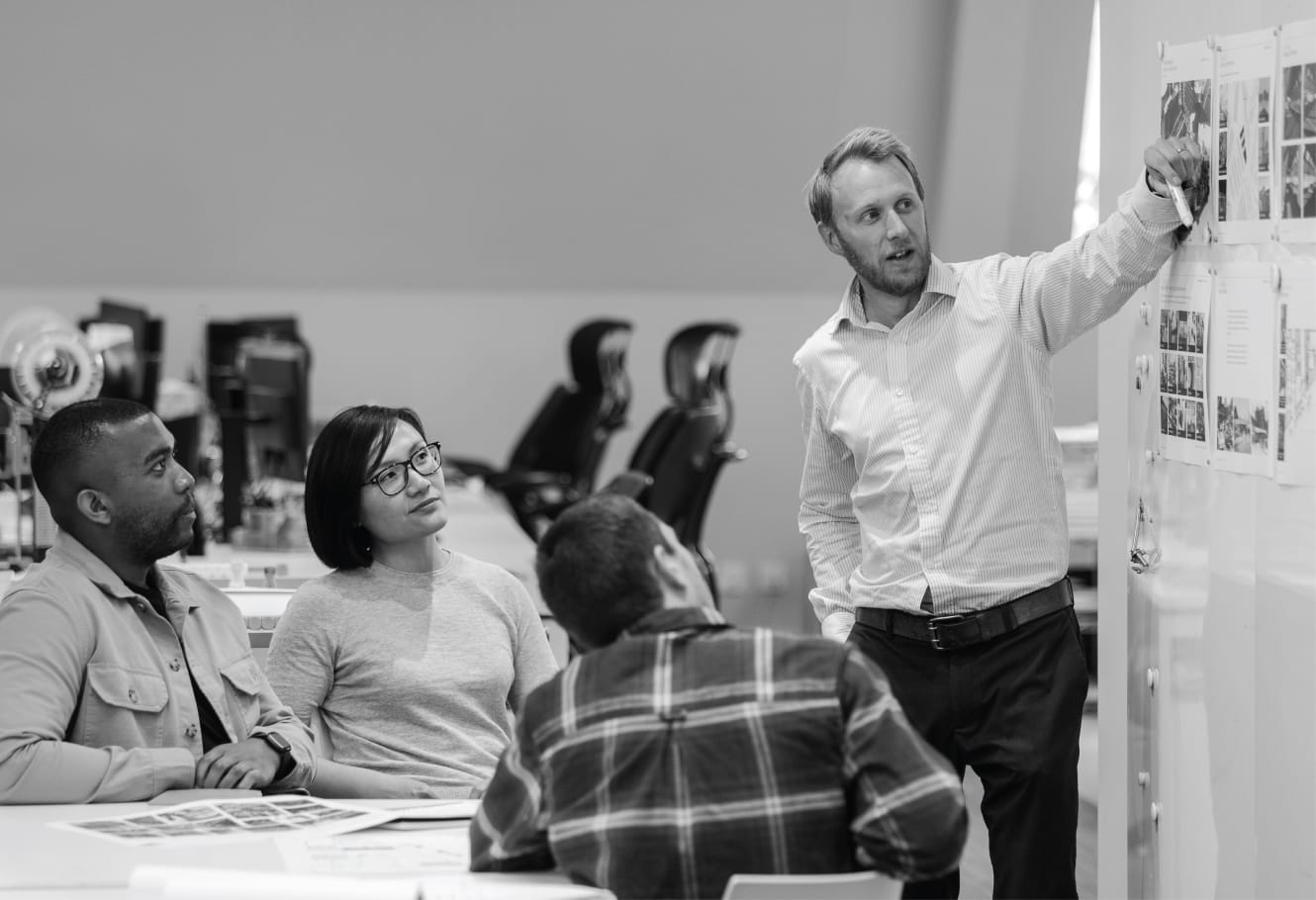
This is Leonard Life Exploring future thinking and creating innovative design, inspired by collaboration.
Naturally inquisitive, we have a strong desire to influence the world around us, taking an active role in guiding key insights, innovations and challenging convention.
It’s our people and their daily experiences that drive us. We talk, listen, and share our ideas, making sure our team feel supported and inspired in a fun, inclusive and dynamic work environment.
We believe in creating opportunities for growth within the company, so that we all have the chance to succeed and reach our career goals at Leonard Design.
Mentors
Everyone at Leonard Design is allocated a mentor, someone outside of your day to day team to provide regular support on a professional and personal level.
Self Reflection/Career Reviews
At the start of each year, everyone meets with a senior member of the team to discuss and plan out the steps they need to take to progress and develop.
Training
It’s a priority to provide the resources our team need to develop their skill-set. We support this through professional training, exhibitions, talks, events or wherever they find inspiration.
Placements and RIBA Mentoring
We support future talent through placements and mentoring schemes. Young designers gain hands-on experience working on real projects, whilst refreshing our own thinking and creative processes.
Work Experience
We regularly inspire the next generation through engaging work experience. Students work on real briefs with support from our team, whilst gaining insight into the world of design and office life.
Architecture Apprenticeship
Partnering closely with Nottingham’s Universities, we are supporting several team members through the Architecture Degree Apprenticeship Programme, where they undertake practice-based research to enhance their own learning whilst benefitting the wider sector.
The bonds that unite our people are strengthened by a whole host of initiatives, events, and social activities. We also embrace hybrid working and open leave.
We are proud to celebrate our shared values, but we also embrace what makes us different. Ours is a respectful and inclusive environment where diversity thrives.

We are committed to taking care of each other and our overall well-being. Feeling good both mentally and physically are equally as important to us.
We are a dedicated bunch when it comes to work of course, but we also place great value in a healthy work/life balance.
The many creative hobbies, passions and interests we pursue in our free time only serve to fuel our collective imaginations yet further, and harness a truly diverse and broader range of skills.
We are
Artists
Bakers/Cooks
Crafters/Printmakers
Cyclists
Fitness/Sports Coaches
Gardeners
Golfers
Home Improvers
Martial Arts Practitioners
Microbrewers
Musicians
Outdoor Enthusiasts
Photographers
Podcasters
Prison Employment Advisors
Runners
Skiers
Writers
Check out our wonderful people, hear about what motivates and inspires them throughout the day, and what they think of life at Leonard Design.
We are always on the look out for talented people. Take a look at our current vacancies, give us a call or send in your CV and let’s talk.
0
0
0
We work with the best, and have long-lasting relationships with some of the most exceptional clients and collaborators in the world.
Check out some of the awards we have won for our projects, as well as for how we run our business, our quality systems and accreditation.





















